Equestrians like myself get asked this question ALL. THE. TIME. People in the horse industry know the difference, but when asked, where do we even begin?
Don’t worry, I’ll break it down for you.
English saddles and Western Saddles are very different pieces of tack used by horsemen on a daily basis. The western saddle is much bigger and heavier, while the English saddle is smaller and lighter. They also have different parts. The most defining difference between the two, however, is the fact that the western saddle has a saddle horn, and the English saddle does not.
The English Saddle

The English saddle is significantly smaller than the Western saddle and is also much lighter. The English saddle also has similar parts as the western saddle.
Parts of the English Saddle
The Pommel
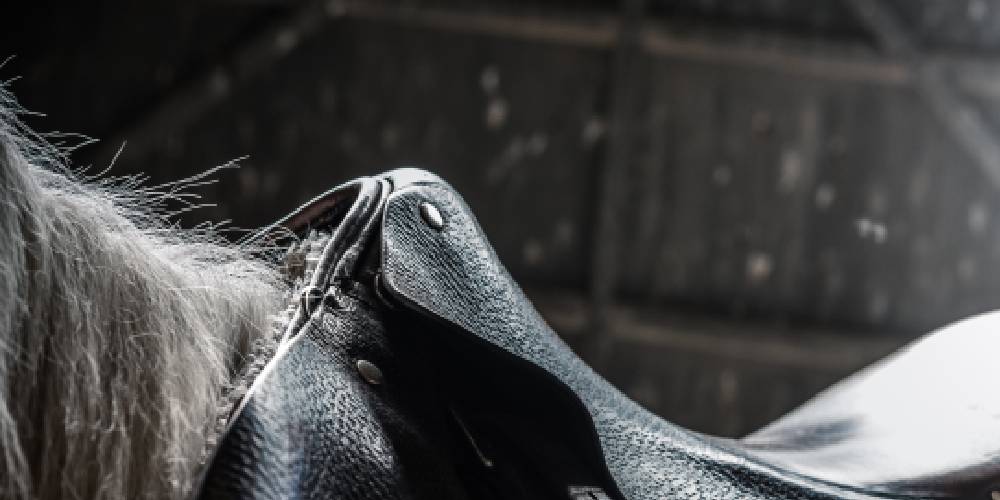
The pommel of the saddle is at the very front. When looking at the saddle, you may notice a slight rise at the front. this is known as the pommel of the saddle.
When I was learning about saddle parts, the way I remembered what the pommel was, was through thinking “Your palms go on the pommel.” The pommel isn’t actually what you hold onto, but if you were to rest your hands at the front of the saddle, that’s most likely where you would put them.
The Cantle
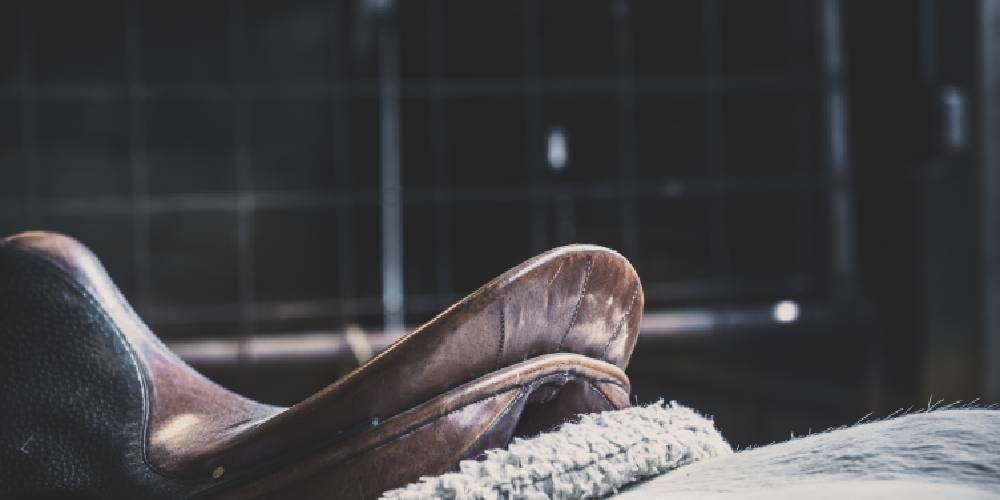
The cantle of the saddle is the rising part of the saddle in the back just after the seat. Different styles of riding will have a flatter cantle or a higher cantle. It depends on the discipline.
One way to remember what the cantle is is by thinking, “I can’t face the cantle” (You can’t face the cantle because then you’d be facing backward!).
The Billets

Billet straps are a very important part of a saddle. They attach to the girth underneath the saddle’s flap. On many saddles there are three, but on some dressage saddles and flat saddles I’ve seen up to four.
The girth features a buckle that is buckled to the billet straps under the saddle (kind of like a belt).
For those of you who have never saddled up with an English saddle, you may notice that the girth only has two buckles and there are three billets. Use the two outer billets on the buckles and leave the middle one free. Doing this will keep the pressure in the middle as well as give you an extra billet in case one of them breaks. Then you can still use the saddle.
The Saddle Flap
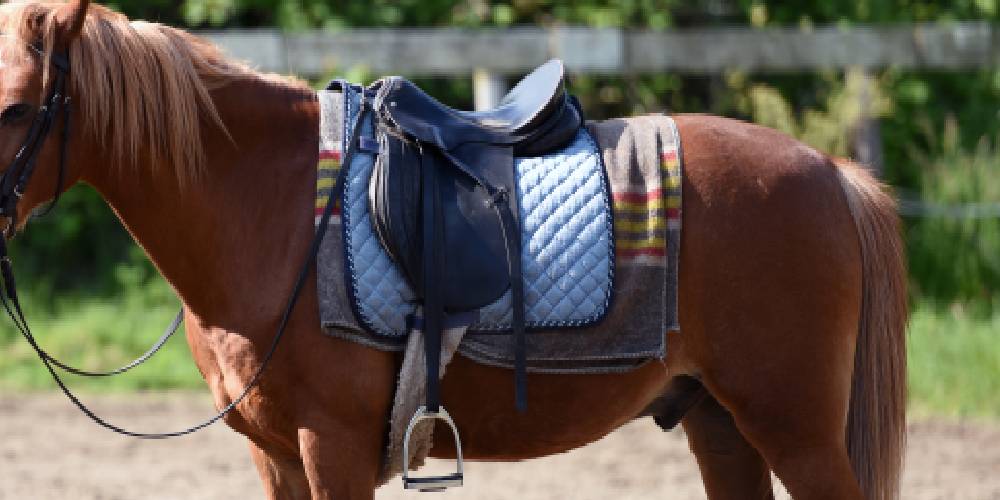
The saddle flap is what the rider’s leg sits against when they’re riding, and it’s also what conceals the billets and sweat flap.
The saddle flap is one of the easiest parts of the saddle to remember as it doesn’t have a fancy name at all.
The Seat

The seat, as you may guess, is where the rider sits in the saddle. it is between the pommel and the cantle.
The Saddle Skirt
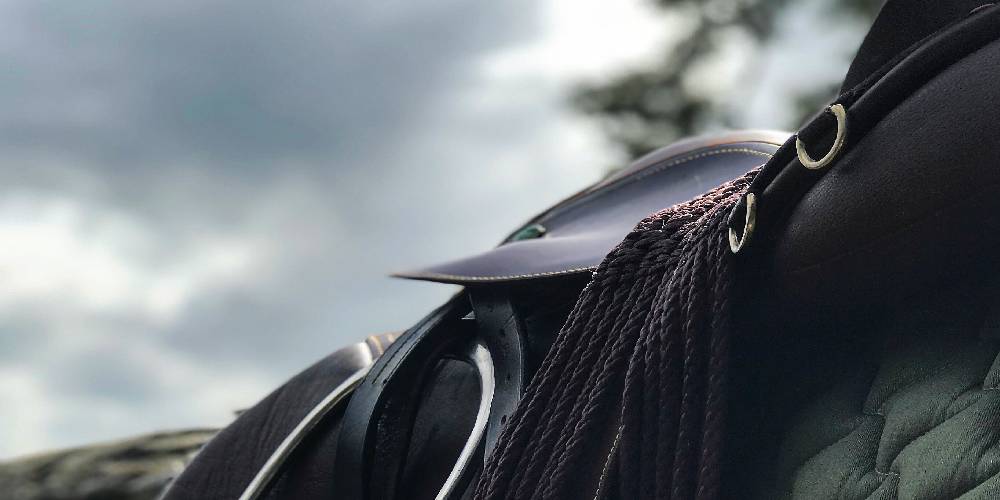
On English saddles, the skirt is quite small. The Skirt is what covers the stirrup bar (mentioned below) and keeps where the stirrup leathers (also mentioned below) are fastened hidden.
This small flap also conceals the buckles on the stirrup leathers, so nothing shows but the leather.
The Stirrup Bar
The stirrup bar is where the stirrup leathers are fastened to. Typically, this piece is made of metal and is also super difficult to put stirrup leathers through (I have learned this first hand).
Stirrup Leathers
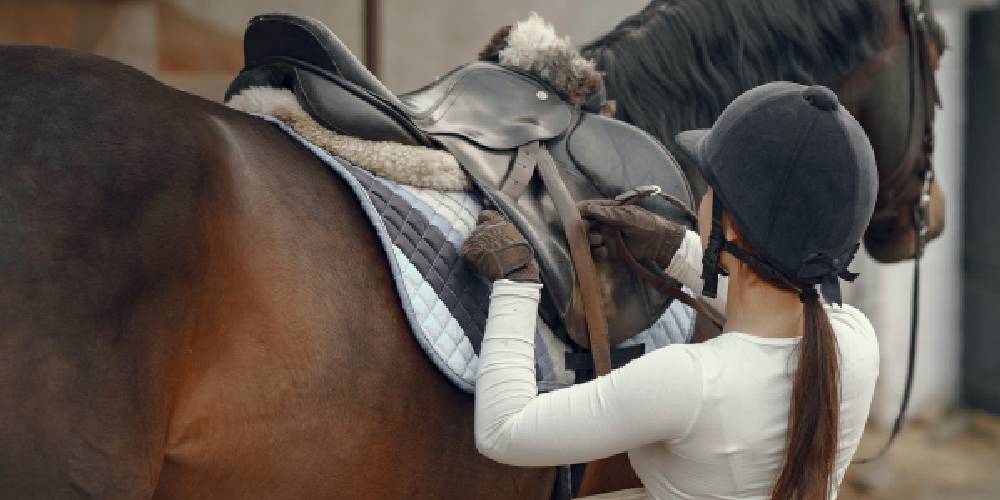
The leathers are attached to the stirrup irons before being looped and fastened to the stirrup bar underneath the saddle skirt.
The leathers have buckles which allow them to be adjusted to the rider.
Stirrup Irons

Iron is just a fancy name for the English stirrup. These stirrups are made of metal and typically have a rubber grip for the foot to rest on at the bottom.
There are many different kinds of stirrups, especially in the English style of riding.
Knee Roll
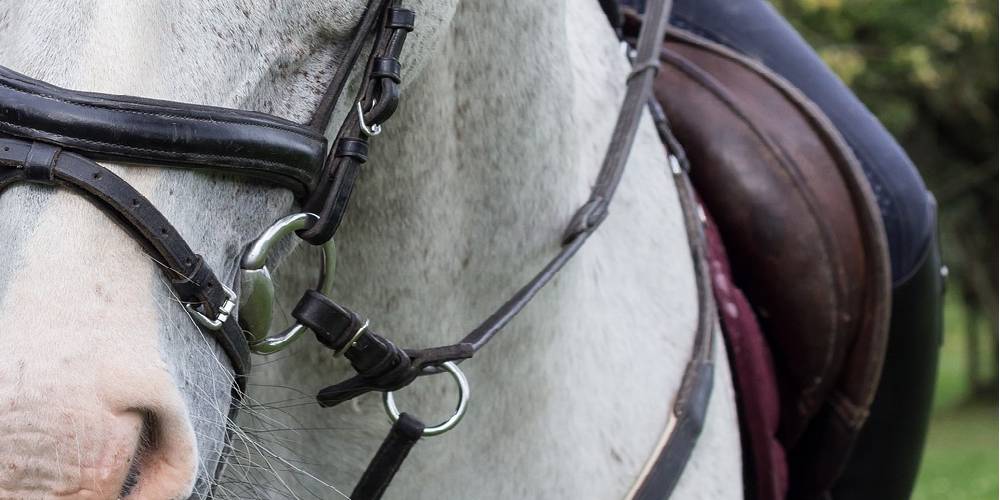
A knee roll is a very helpful tool in riding to better keep your leg position. Not all saddles have a knee roll which forces the rider to already know where to keep their leg.
Dressage saddles have a very large knee roll to keep the rider’s leg in place, while in jumping there is more of a padded one.
Types of English Saddles
The Dressage Saddle
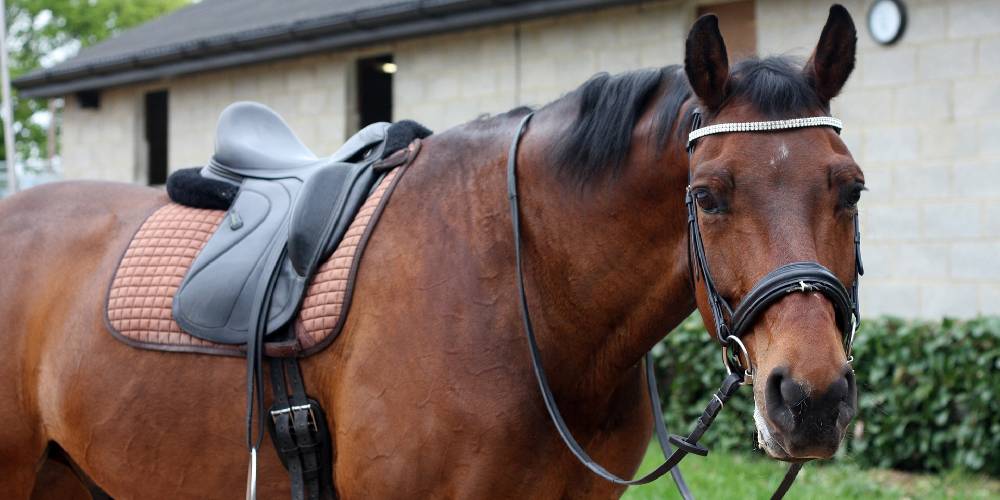
The dressage saddle has a deep seat, high cantle, large knee rolls, and a longer saddle flap. This saddle is taller/longer than most English saddles out there.
This saddle mainly comes in black.
Because of the longer shape and big long knee rolls, the rider must sit taller in the saddle and more upright in general.
The Jumping Saddle
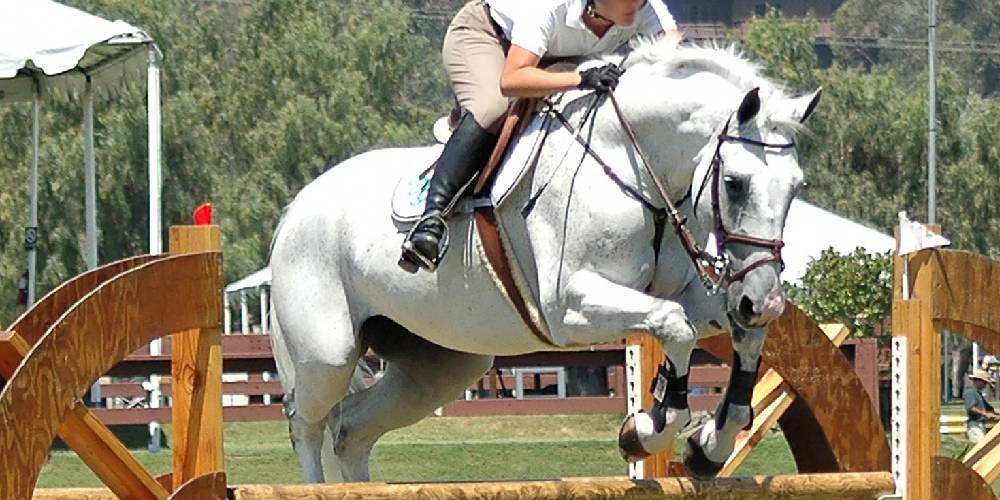
This saddle is a little flatter than the dressage saddle with smaller, wider knee rolls. This saddle has a lower pommel so the rider can rise to go over the jump, but a high cantle as well for the rider to sit back on.
The Racing Saddle

I would hardly call this a saddle. The racing saddle is almost completely flat and isn’t really meant to sit a rider. The racing saddle is just there to hold the stirrups on as jockeys are only supposed to stand in their stirrups.
The All Purpose Saddle
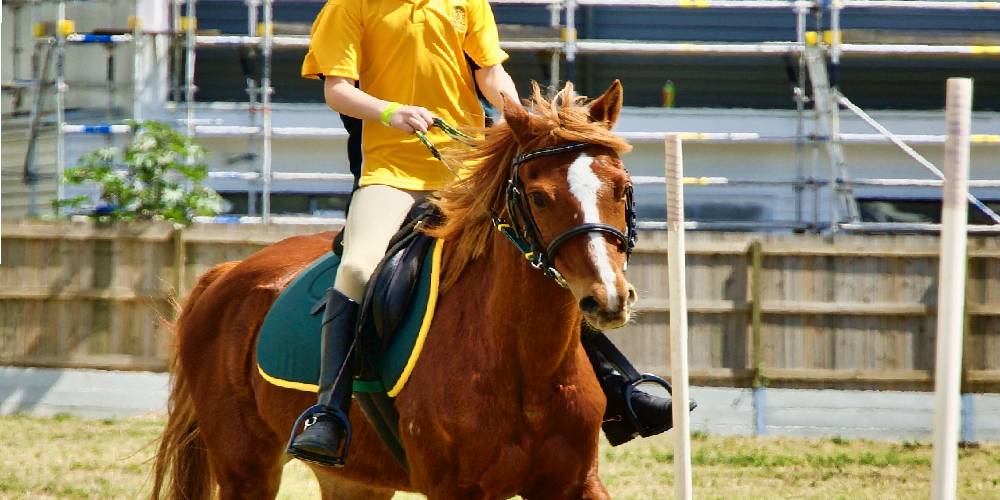
This saddle is a great beginner saddle for those who are just learning flat work and transitions. All purpose saddles are able to be used at the lower level competitions and can be used for a variety of disciplines to start. Typically these saddles have flaps and knee rolls that are similar to a jumping, but a deep seat and high cantle like a dressage saddle.
The Flat Saddle
The flat saddle is used for saddle seat and English Country Pleasure classes. The cantle and pommel on this saddle are very low and the seat is all the way back on the weaker part of a horse’s back. The flaps are wide and long and there are sometimes four billets seen in these saddles.
The Western Saddle
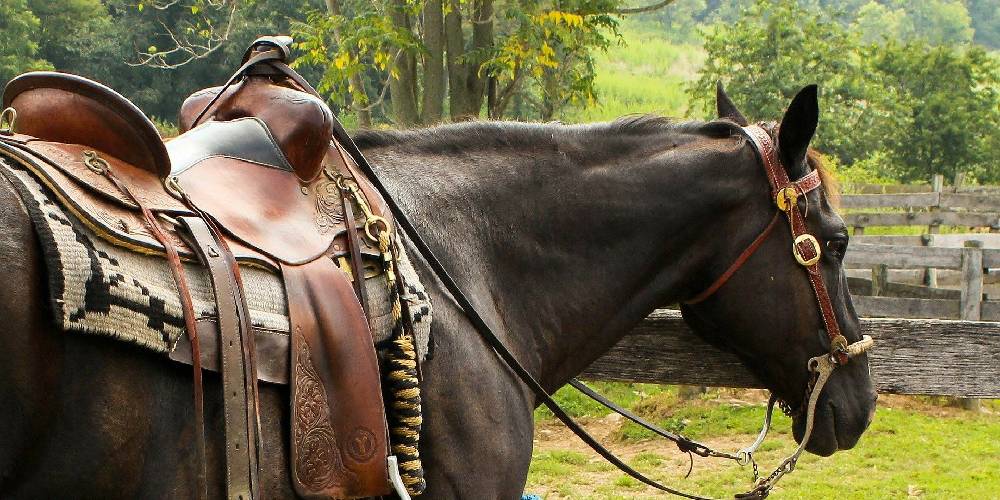
The western saddle is heavy and long covering most of the horse’s back. The Parts of the western saddles are similar to the English saddles though there are a few differences
Parts of the Western Saddle
The Pommel
The pommel on the Western saddle is in the same place as on the English saddle only it supports the saddle horn and is noticeably bigger than the one on the English saddle.
The large pommel helps keep the rider back in the saddle.
The Saddle Horn
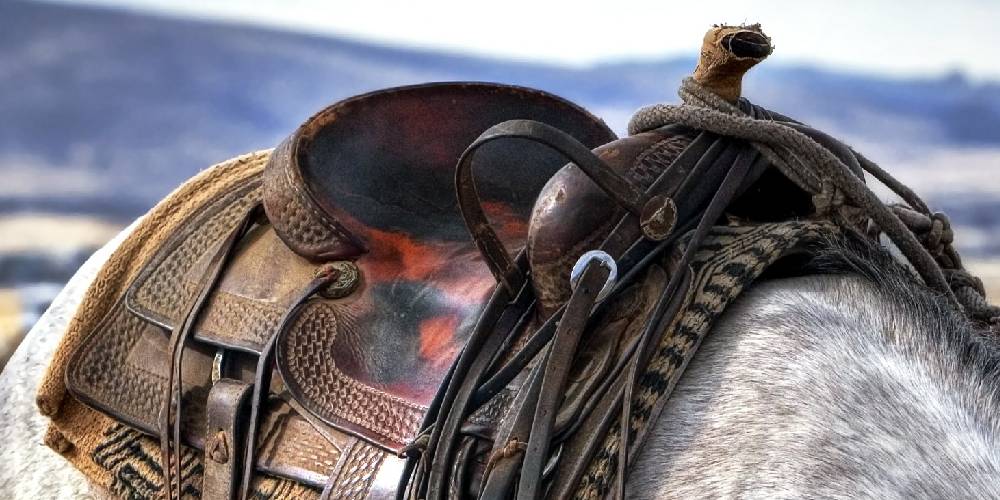
The saddle horn is one of the most defining traits of the western saddle. This horn is traditionally used to hold a rope when roping a cow back in the Wild West days.
Today, it still has the same purpose as it did in the past. Beginners think that the horn is something you’re supposed to hold onto, but this is not the case at all. The horn is for a rope, it is not a handle.
The Cantle
Like the dressage saddle in English riding, the western saddle typically has a higher cantle.
The Latigo and Cinch
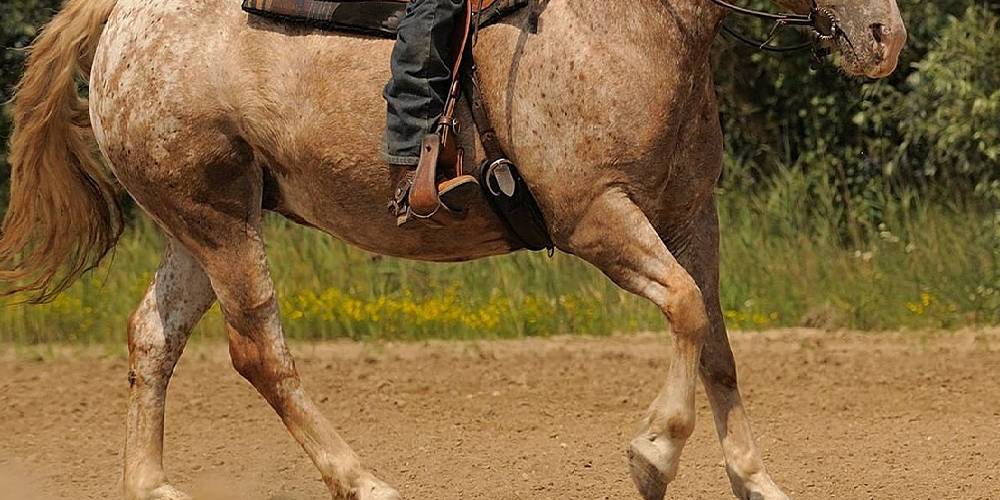
Unlike the English saddle, which has a girth and billets, the western saddle has a latigo and cinch. The cinch is comparable to the girth as it is a large piece of material that goes under the horse to hold the saddle in place. Rather than attaching to billets, the western saddle attaches to the latigo. This is how the western saddle is held in place.
The Seat
Like in English riding, the saddle has a seat between the cantle and pommel where the rider sits. In Western riding, there is a much larger seat than in the English style.
The Saddle Skirt
The saddle skirt on the Western saddle is a part of the saddle that goes around the back of the saddle and underneath the stirrup fender. The skirt in Western saddles is much different than in English saddles. What is more compareable to the English saddle’s skirt is the Western saddle’s side jockey.
The Seat Jockey
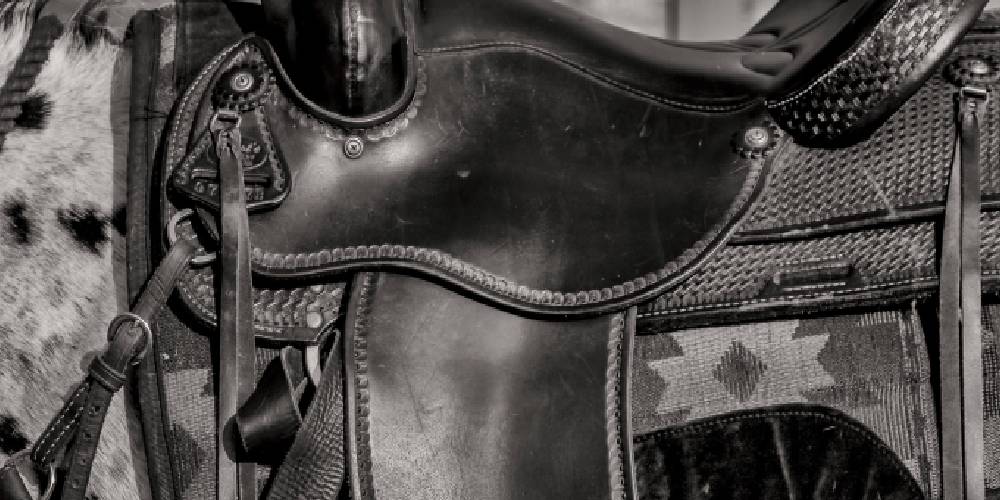
This is a part of the saddle similar to the skirt on an English saddle. This is a small flap that comes directly off the seat and covers the rigging for the stirrup fender.
The Rear Jockey
the rear jockey is an extra layer of leather on top of the saddle skirt and behind the cantle.
The Fender
Like the stirrup leather, the Fender is what holds the stirrup in place. It fastens behind the front of the fender and the length of the stirrups can be adjusted that way. The fender itself is attached to the saddle underneath the side jockey.
Stirrups
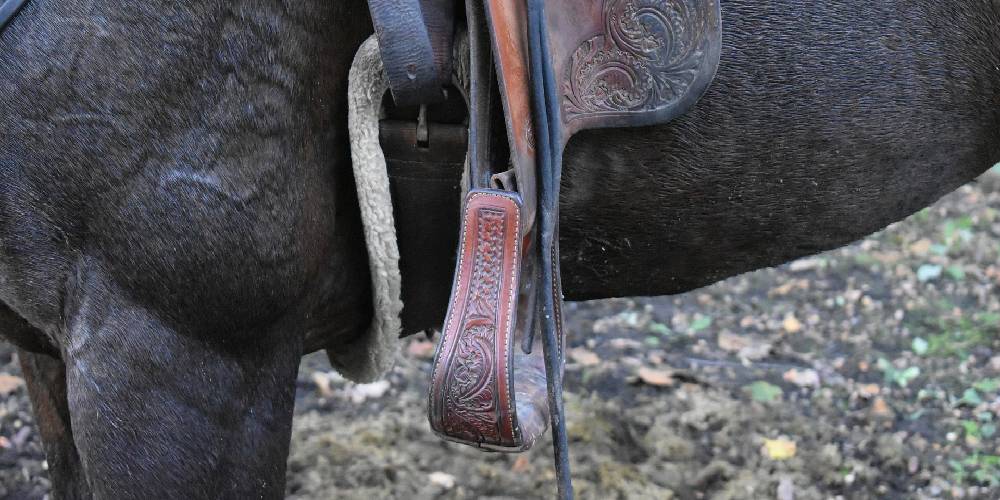
Stirrups are the things that the rider’s feet go into. In western riding they are just called stirrups, nothing fancy. These are attached to the fenders.
The Latigo Holder
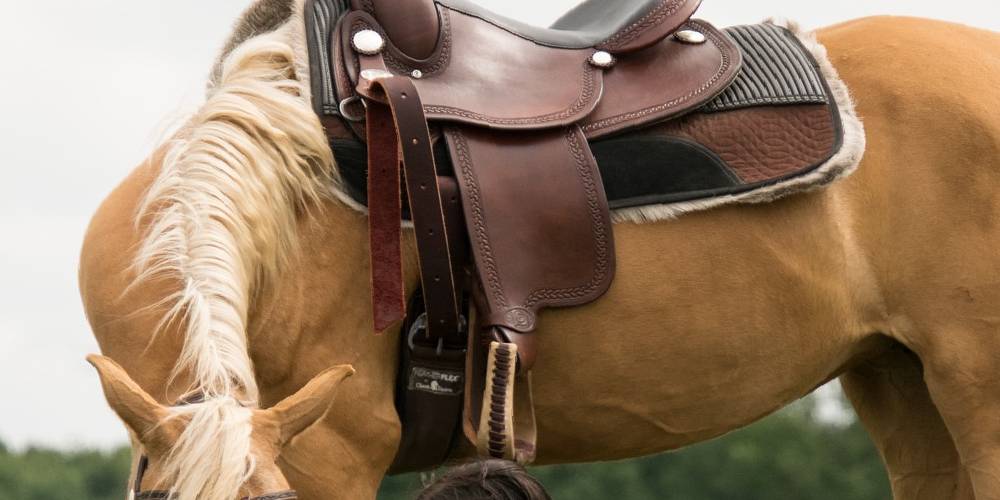
The latigo holder is not always seen on the western saddle. Typically it is a piece of leather with a slot big enough to put the latigo through. The latigo holder is there for the extra latigo to go through once the horse is cinched up so it isn’t in the way of the horse or the rider.
Types of Western Saddles
The Barrel Saddle
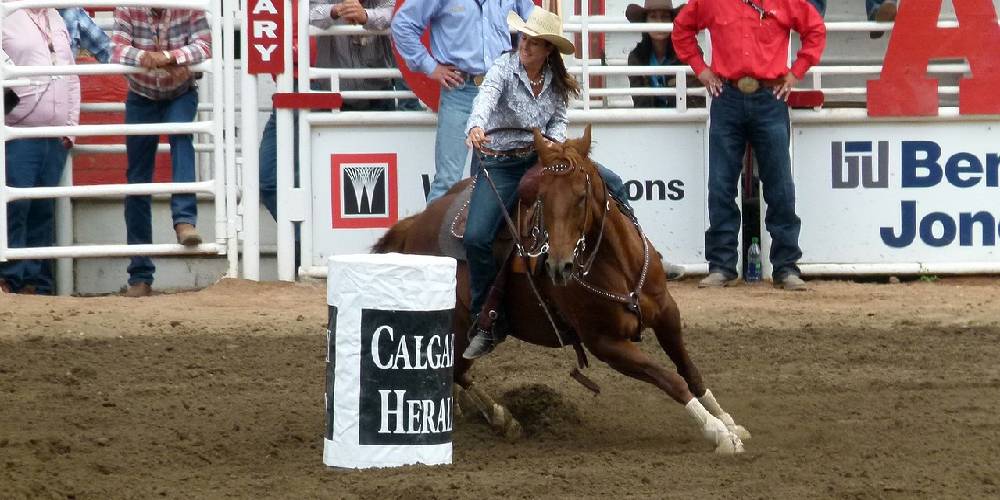
The Barrel saddle has a deep seat, a high pommel, and a high cantle. The reason for the high pommel and cantle is to help the rider stay in the saddle as they are moving and turning very quickly.
The Roping Saddle
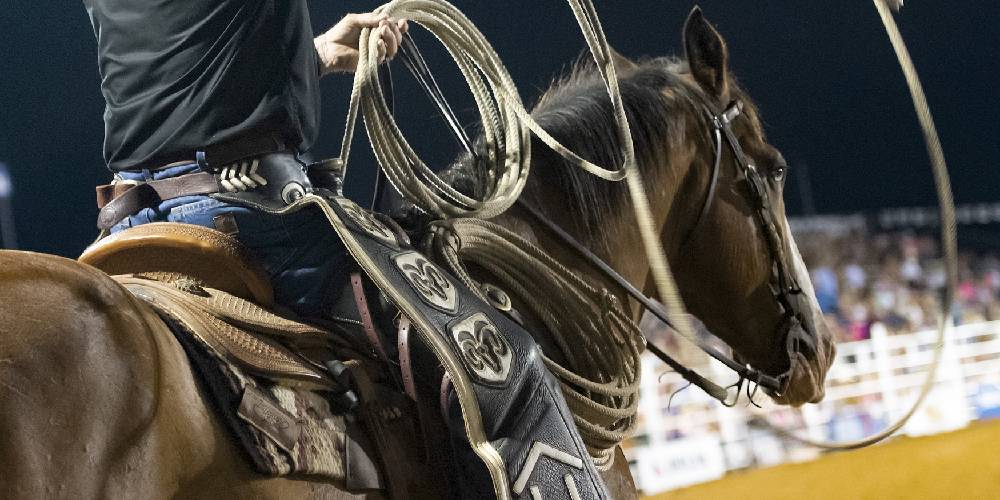
The roping saddle has a low cantle, strong saddle horn and a thick, wide pommel. The reason for this is so the rider can rope a cow and dally the rope around the horn to stop the cow. the horn should be strong enough to hold the cows weight and stop it without breaking.
The Reining saddle
The reining saddle has a medium sized pommel and cantle with an average seat. The reining horse and rider aren’t doing extreme riding, so the cantle and pommel don’t need to be overly high to help stabilize the rider.
The Pleasure Saddle
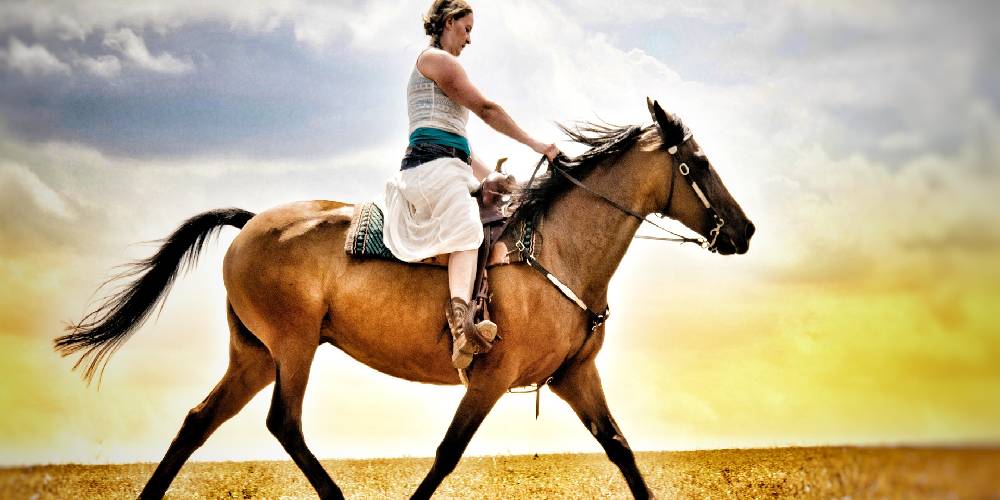
The pleasure saddles used in shows are decorated to the extremes with silver, but your typical western pleasure saddle is just made of leather and has a low pommel and cantle with a cushioned seat.

